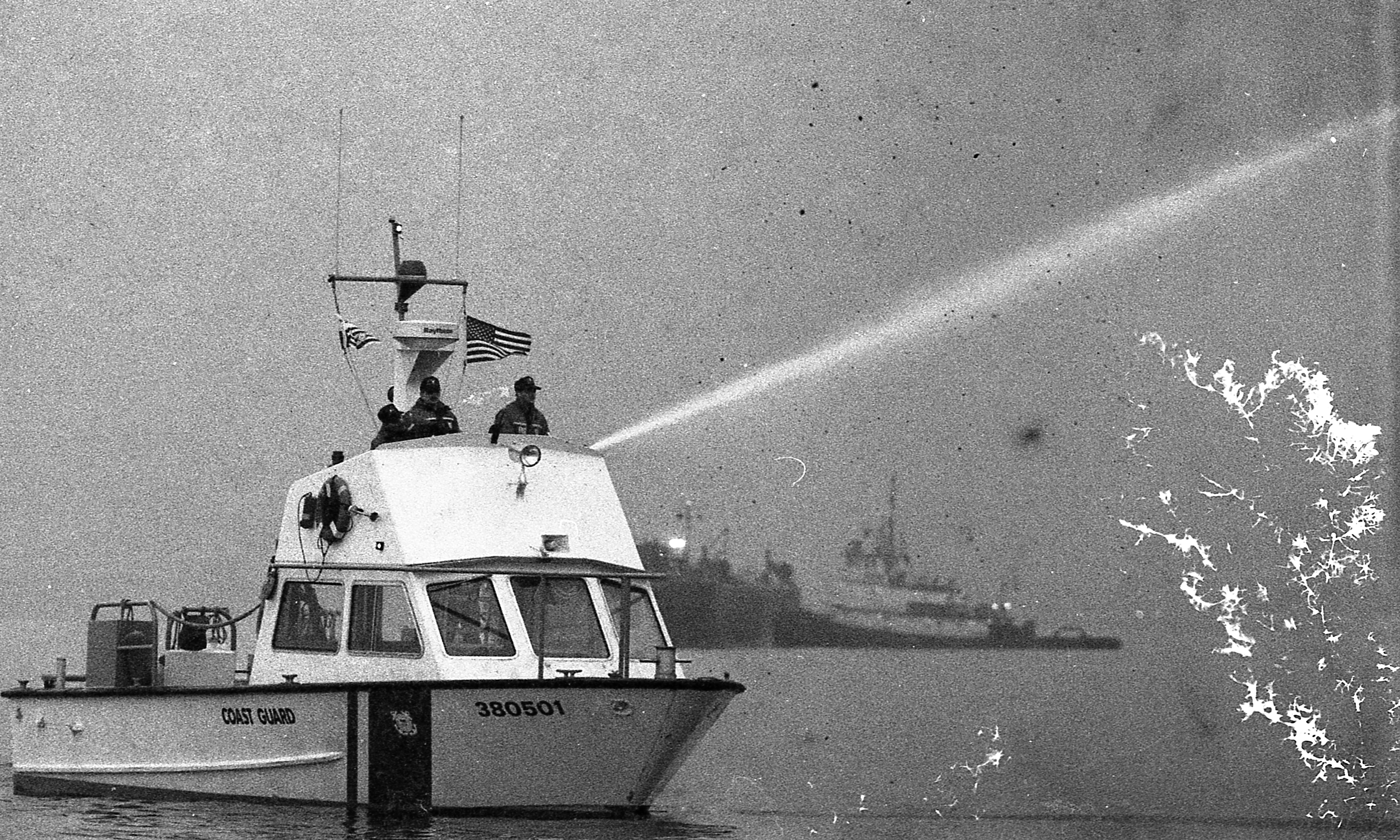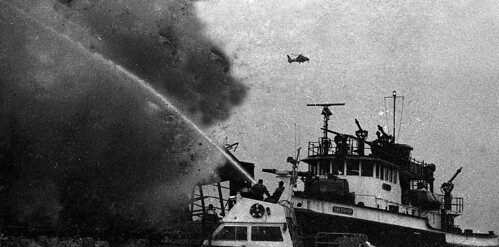Of course I had no idea what was on it, only that it was one of several rolls of film exposed sometime, and am only able to date it from my dim recollection and when the CG 380501 went into service in NY Harbor, which was 1991.
So, what is going on here? The large white holes in the emulsion to the right of the frame are probably static, most likely due to the film freezing at some point in it's long life in obscurity. The grain is bad, most likely because it was exposed at a different ISO than developed.
The lower photo shows many of the same defects as the other roll. I am pretty sure that a photo of this fire ran in the NY Times, but I have not yet found the negatives or a tear sheet. It has been a long time. I wonder if these pics were better than the ones I turned in? Who knows.
These were the best two of the roll, there were others which were completely obscured with static and artifacts. I think they hold up rather well, in spite of the damage.
The moral of the story? This is why photojournalists in the age of film shot so many frames, you never knew when lab mistakes would happen, film gets misplaced, exposed or destroyed. Now, I am in no way pretending that this is important work, piers burned all the time in those days. Certainly this is not the most famous darkroom disaster, that would have to be Robert Capa's D-Day photos, botched by a lab tech in WWII. This is just one of the disasters I am willing to admit.
I will continue to look for other images from this day. I am sure there must be at least 10 rolls shot, possibly some in color.


No comments:
Post a Comment